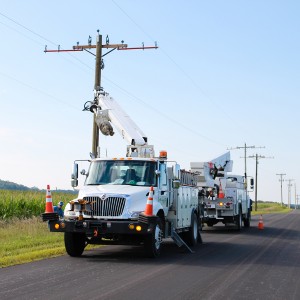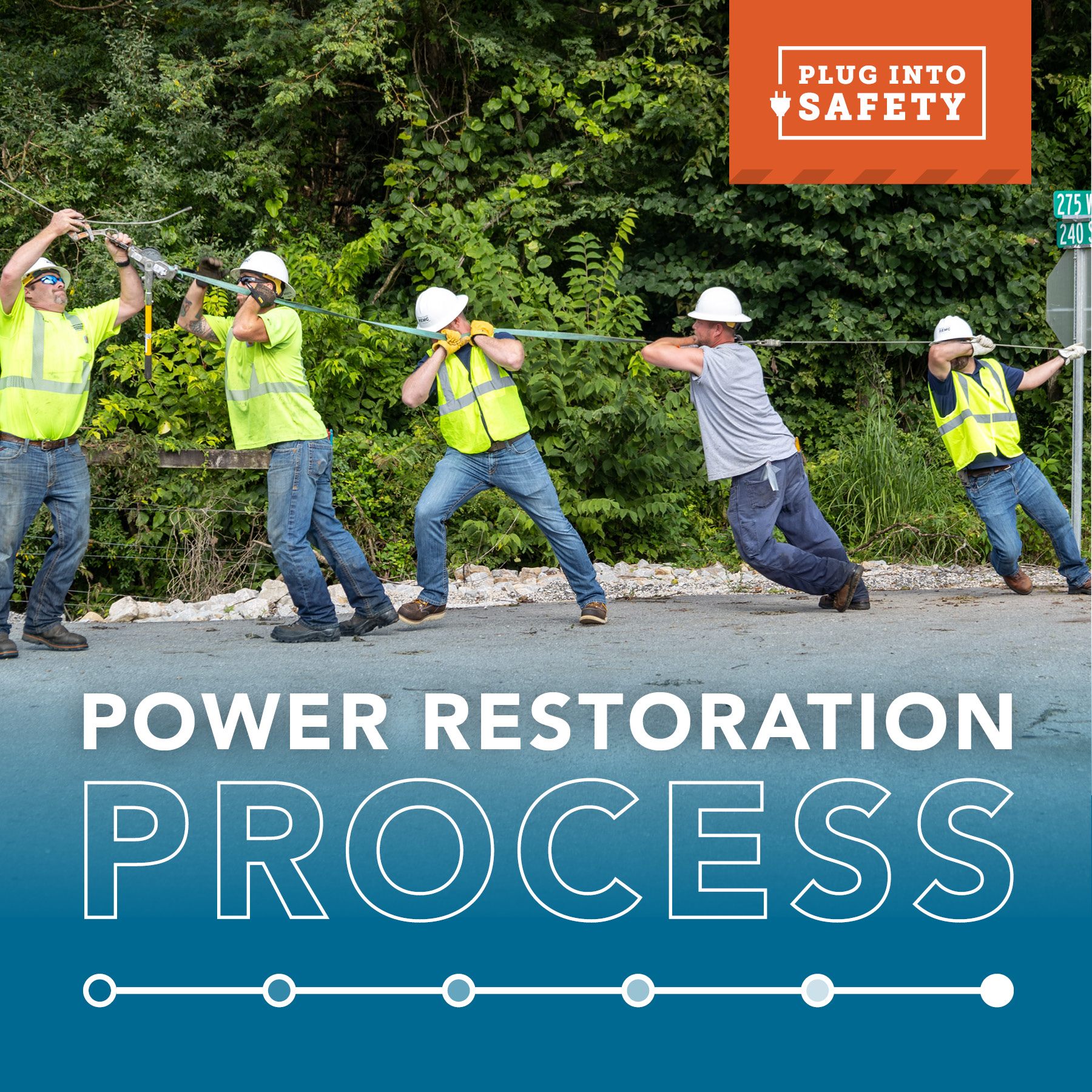 We all hear the public service announcements warning drivers to be aware of road construction, and the possible consequences of not being mindful of these sometimes hazardous work zones. But how many of us are actually listening to these warnings? Do you slow down when you see that flashing orange “Men at Work” sign?
We all hear the public service announcements warning drivers to be aware of road construction, and the possible consequences of not being mindful of these sometimes hazardous work zones. But how many of us are actually listening to these warnings? Do you slow down when you see that flashing orange “Men at Work” sign?
This year, National Work Zone Awareness Week is April 9-13. Indiana Electric Cooperatives reminds drivers to be mindful of lineworkers on the job.
Utility trucks are equipped with flashing lights and reflective materials. Work zones are marked on the road with orange cones. And line crews wear reflective clothing when working near roadways. But even with these measures in place, work zones are dangerous.
“Our crews often work during harsh weather, which makes the job even more dangerous for our line crews,” said Tom VanParis, CEO of Indiana Electric Cooperatives. “Equipment that would be clearly visible in daylight is difficult for motorists to see when there is rain, snow, sleet or hail. But keeping the power on means we work during those conditions, too.”
When driving through a work zone or past a line crew, remember workers are doing their job and what they’re doing is simply to help you. We can help keep workers, other drivers, passengers and ourselves safe by following these tips:
- Pay attention to warning signs and flaggers.
- Be alert when you approach and enter a work zone.
- Don’t speed or tailgate in and around work zones.
- Avoid distractions such as talking or texting on the phone, changing your radio station, eating, or drinking when approaching or in work zones.
- Keep your attention on the road, not on what the workers are doing.
- Turn your headlights on to make your vehicle more visible to workers and other drivers.
- Watch for brake lights or slow moving vehicles.
Those at your electric cooperative understand work zones can be frustrating, especially when you’re in a hurry. But road crews and lineworkers work diligently to reduce the effect of roadside activities during your commute. They need your full attention to get the job done quickly and safely.
“On behalf of Hoosier lineworkers, please slow down and take your time while passing through work zones,” VanParis said. “It’s important to your safety and also those who are hard at work to help you and your neighbors.”
Sources: Indiana Department of Transportation, National Work Zone Safety Information Clearinghouse, US Federal Highway Administration
Slow down driving through work zones — it’s the law!
The Indiana Work Zone Safety Law sets steep penalties for driving infractions within highway work zones. Here are the consequences if you’re caught breaking the law:
- First time citations for speeding in a work zone result in a $300 fine. The fine increases to $500 for a second offense and $1,000 for a third offense within three years.
- Motorists who drive recklessly or aggressively through a work zone face fines up to $5,000.
- Drivers who injure or kill a highway worker may end up paying a $10,000 fine and serving up to six years behind bars.
Fines generated from the work zone law are used to fund additional patrols in and around work zones.
Source: www.in.gov
Tips for driving safely in work zones
- Take extra care to pay attention and expect the unexpected. Work zone configurations can change without notice.
- Don’t text or talk on the phone, and avoid taking your hands off the wheel.
- Watch for speed limit reductions, narrowing lanes, changing traffic patterns, and – most importantly – highway workers.
- Respect the posted speed limits and safely merge as soon and as safely possible. This will allow traffic to flow smoothly.
- Keep in mind: Driving 45 mph, instead of 55 mph, through a 5-mile work zone will only add 1.2 minutes to your trip. Speeding and aggressive driving are major causes of work zone crashes.
- Keep a safe distance on all sides of your vehicle, and maintain a safe following distance. Rear-end collisions are the most common type of work zone crash.
- Respect the flaggers and obey their guidance. Be patient when driving through work sites with flagger control.
- Pay attention to the road signs. Those signs are carefully selected to give drivers accurate information and important warnings.
- Expect delays and allow extra travel time to travel through work zones.
- Select alternate routes if possible to avoid the work zone completely.
- Be patient and stay calm. Remember the crews are working to make the road better for you!
Source: www.in.gov





